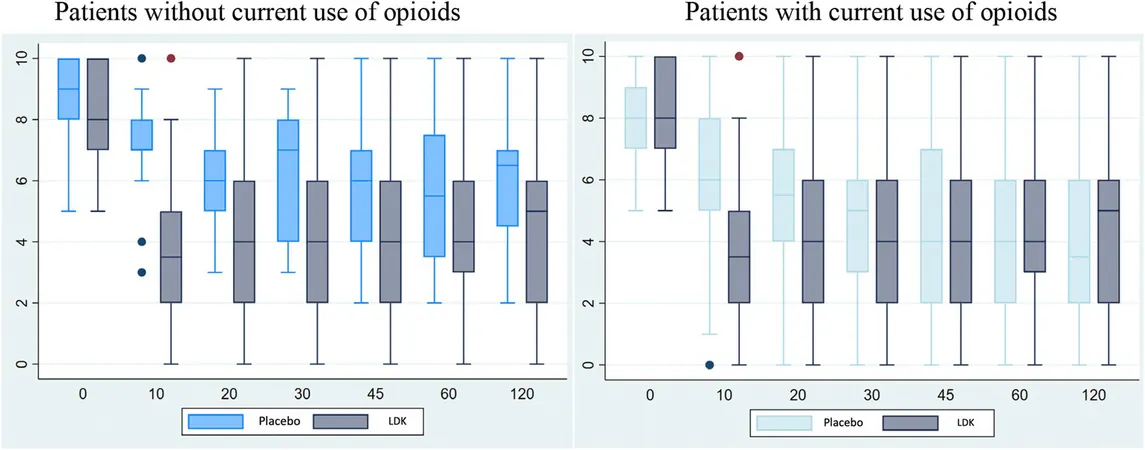
Revolutionary Breakthrough: Low-Dose Ketamine Emerges as a Game-Changer for Pain Relief in Emergency Settings!
2024-11-19
Author: Ming
Introduction
In a groundbreaking study published in the Academic Emergency Medicine journal, researchers have uncovered the promising potential of low-dose ketamine (LDK) in enhancing pain management strategies in emergency departments (ED). The research, intriguingly titled “Low-dose ketamine as an adjunct to morphine: A randomized controlled trial among patients with and without current opioid use,” suggests that this novel approach could transform how healthcare professionals tackle acute pain.
The Challenge of Pain Management in Emergency Settings
Pain is one of the leading reasons individuals seek help in emergency settings, and managing it effectively, especially for patients with existing opioid tolerance, poses a significant challenge. Conventional opioid treatments often fail to provide adequate relief for these individuals, leading to the necessity of higher dosages. This escalation can spark a precarious cycle of hyperalgesia—where patients become more sensitive to pain—and withdrawal symptoms, raising concerns about opioid dependency and the broader opioid crisis.
Study Overview
In their meticulous randomized, placebo-controlled trial, Dr. Stine Fjendbo Galili and her research team assessed the efficiency of LDK in conjunction with morphine among a varied group of patients in the ED. The findings were promising: a single dose of 0.1 mg/kg of ketamine resulted in notable reductions in pain scores within just 30 minutes, showcasing its potential for immediate relief.
Implications of the Findings
The implications of this study are profound. The research indicates that low-dose ketamine is not only effective for those without prior opioid use but may also serve as an advantageous analgesic for opioid-tolerant patients, offering a refreshing alternative in pain management protocols. Furthermore, the study opens the door for exciting future investigations into optimizing ketamine administration techniques, such as utilizing bolus doses or continuous infusions, which could prolong its pain-relieving effects.
Conclusion
This substantial advancement comes at a crucial time as the medical community grapples with the challenges of opioid use and the urgent need for alternative pain relief methods. The study’s findings could herald a new era in emergency medicine, empowering healthcare providers with additional tools to enhance patient care while mitigating the risks associated with conventional opioid treatments. Stay tuned for further updates on this exciting research as the medical field continues to explore the full potential of low-dose ketamine in pain management!


 Brasil (PT)
Brasil (PT)
 Canada (EN)
Canada (EN)
 Chile (ES)
Chile (ES)
 España (ES)
España (ES)
 France (FR)
France (FR)
 Hong Kong (EN)
Hong Kong (EN)
 Italia (IT)
Italia (IT)
 日本 (JA)
日本 (JA)
 Magyarország (HU)
Magyarország (HU)
 Norge (NO)
Norge (NO)
 Polska (PL)
Polska (PL)
 Schweiz (DE)
Schweiz (DE)
 Singapore (EN)
Singapore (EN)
 Sverige (SV)
Sverige (SV)
 Suomi (FI)
Suomi (FI)
 Türkiye (TR)
Türkiye (TR)